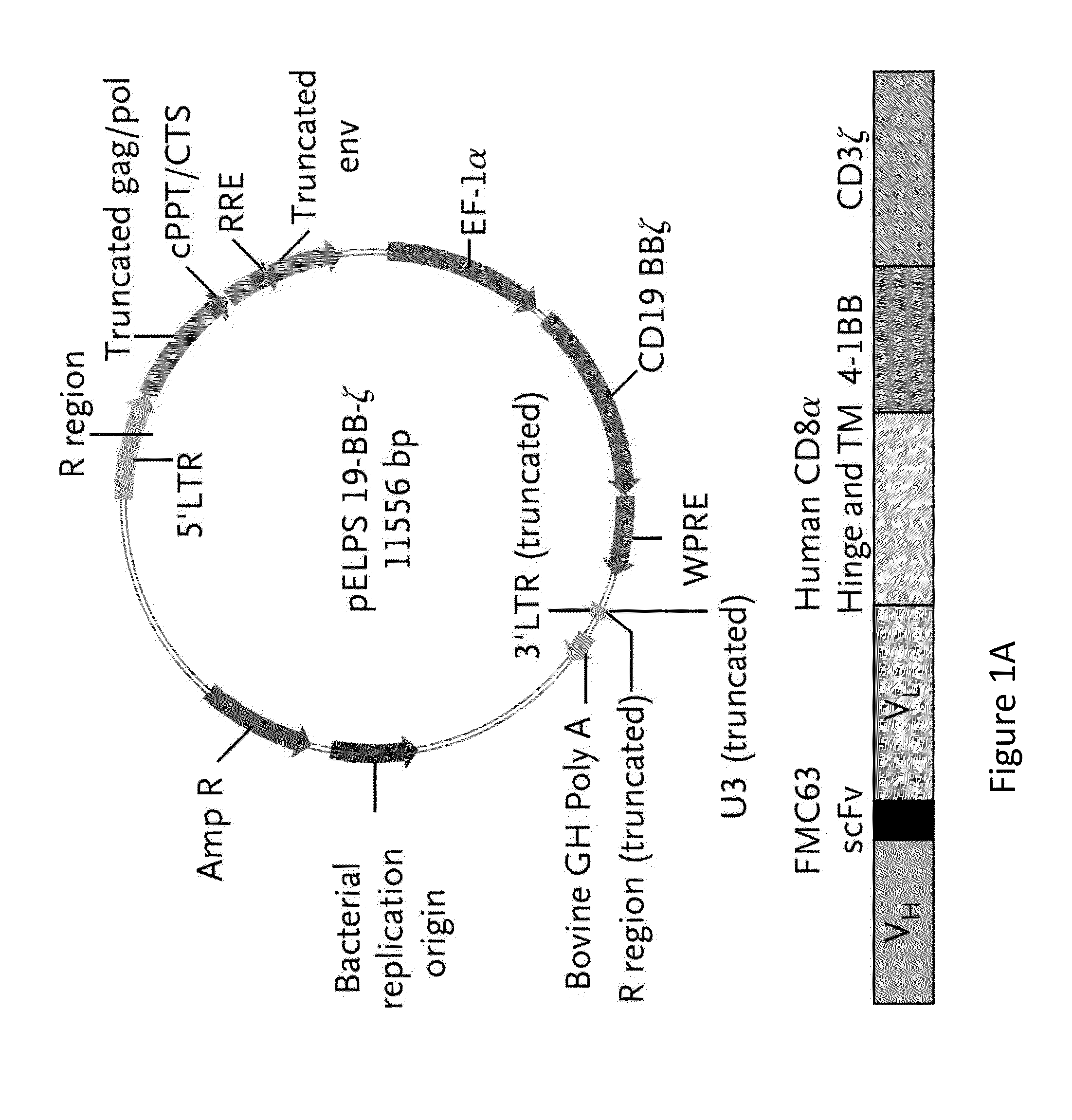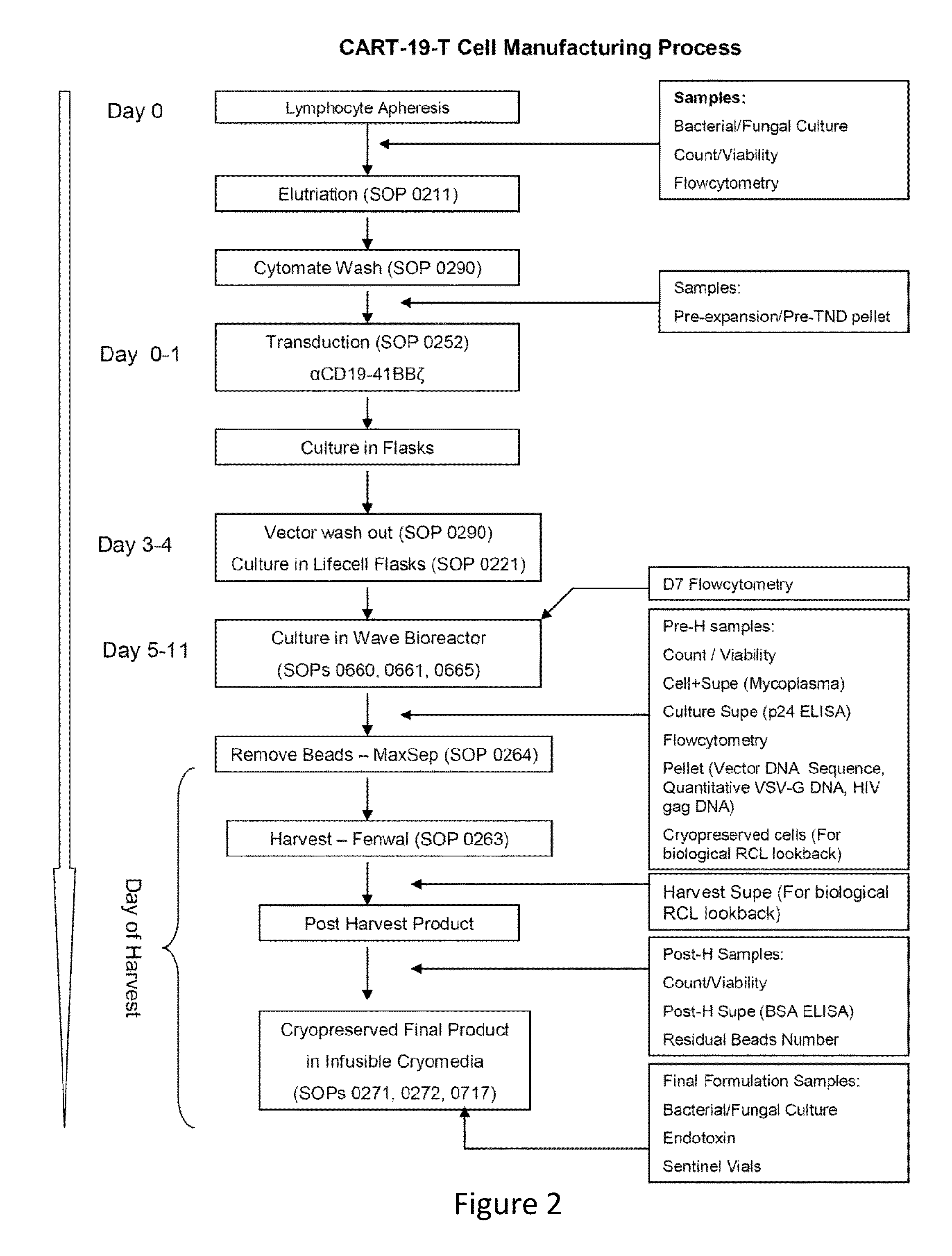Methods for Assessing the Suitability of Transduced T Cells for Administration
a technology suitability, which is applied in the field of methods for assessing the suitability of transduced t cells for administration, can solve the problems of disappointing clinical activity, rapid disappearance of cells, and limited success of using genetically modified cells expressing cars to treat these types of patients
- Summary
- Abstract
- Description
- Claims
- Application Information
AI Technical Summary
Benefits of technology
Problems solved by technology
Method used
Image
Examples
experimental examples
[0193]The invention is further described in detail by reference to the following experimental examples. These examples are provided for purposes of illustration only, and are not intended to be limiting unless otherwise specified. Thus, the invention should in no way be construed as being limited to the following examples, but rather, should be construed to encompass any and all variations which become evident as a result of the teaching provided herein.
[0194]Without further description, it is believed that one of ordinary skill in the art can, using the preceding description and the following illustrative examples, make and utilize the compounds of the present invention and practice the claimed methods. The following working examples therefore, specifically point out the preferred embodiments of the present invention, and are not to be construed as limiting in any way the remainder of the disclosure.
example 1
[0195]Analysis for Contaminants
[0196]Lymphocytes transduced to express chimeric antigen receptors (CARs) destined for administration into a human subject are analyzed to detect and quantify possible contaminants introduced during the process of transduction.
[0197]General Laboratory Statement
[0198]Research sample processing, freezing, and laboratory analyses were performed under principles of Good Manufacturing Practices or Good Laboratory Practices with established SOP and / or protocols for sample receipt, processing, freezing, and analysis.
[0199]Vector Production
[0200]The CD19-BB-z transgene (GeMCRIS 0607-793) was designed and constructed as described (Milone et al., 2009, Mol Ther. 17:1453-1464). Lentiviral vector was produced according to current good manufacturing practices using a three-plasmid production approach at Lentigen Corporation as described (Zufferey et al., 1997, Nature Biotechnol 15:871-875). A self-inactivating lentiviral vector (GeMCRIS 0607-793) was designed, whic...
PUM
| Property | Measurement | Unit |
|---|---|---|
| time period | aaaaa | aaaaa |
| time period | aaaaa | aaaaa |
| incubation time period | aaaaa | aaaaa |
Abstract
Description
Claims
Application Information
 Login to View More
Login to View More - R&D
- Intellectual Property
- Life Sciences
- Materials
- Tech Scout
- Unparalleled Data Quality
- Higher Quality Content
- 60% Fewer Hallucinations
Browse by: Latest US Patents, China's latest patents, Technical Efficacy Thesaurus, Application Domain, Technology Topic, Popular Technical Reports.
© 2025 PatSnap. All rights reserved.Legal|Privacy policy|Modern Slavery Act Transparency Statement|Sitemap|About US| Contact US: help@patsnap.com



